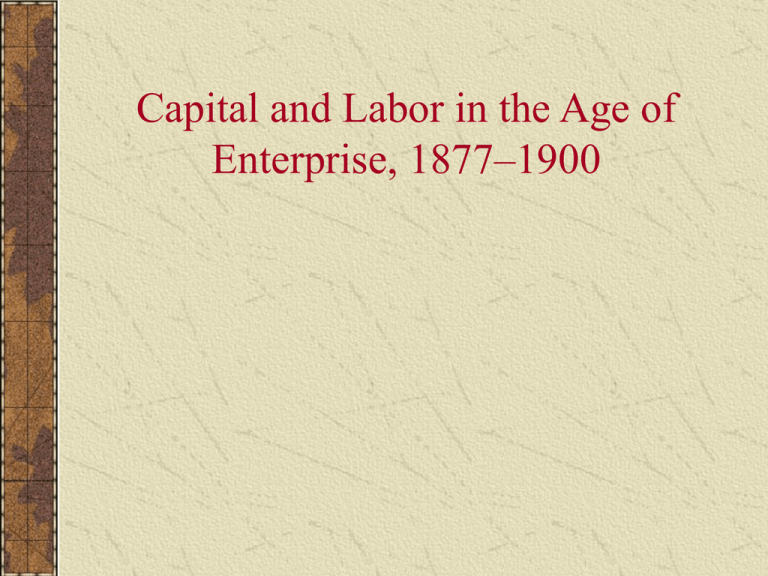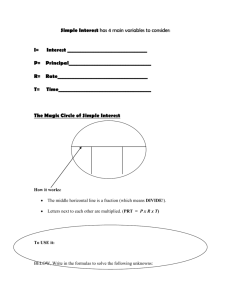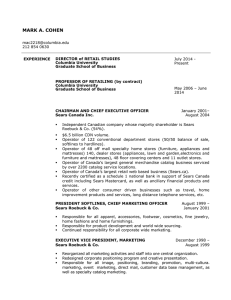America: A Concise History 3e
advertisement

Capital and Labor in the Age of Enterprise, 1877–1900 What factors led to the economic success of industrial capitalism in America after 1877? How were business practices organized and new technologies harnessed in order to maximize profits in American industry? What were the working conditions of American industrial laborers? How and why did American workers seek to improve their working conditions in the late nineteenth century? Industrial Capitalism Triumphant The Age of Steel The Railroad Boom Large-Scale Enterprise The Age of Steel The introduction and ready acceptance of new technologies such as the Bessemer steel furnace. Rapidly expanding markets. An abundance of natural resources. Available labor. Available capital. High profits. Sir Henry Bessemer In October, 1855, Bessemer took out a patent for his process of rendering cast iron malleable by the introduction of air into the fluid metal to remove carbon. Bessemer's industrial process was similar to a Chinese method to refine iron into steel, developed in the second century BCE. They called this process the "hundred refinings method" since they repeated the process 100 times. The Railroad Boom Central Pacific Railroad The Central Pacific Railroad Company of California was organized on June 28, 1861 by the "Big Four" (Collis P. Huntington, [Gov.] Leland Stanford, Mark Hopkins, and Charles Crocker) Huntington Hopkins Stanford Crocker A practical mountain route for the rail line was first conceived and surveyed by Dutch Flat, California gold prospector and drugstore owner Dr. Daniel W. Strong and engineer, Theodore Dehone Judah, who obtained the financial backing of the California group and won federal support in the form of the Pacific Railroad Act, signed in 1862 by former railroad lawyer Abraham Lincoln. CPRR Timetable George Westinghouse In 1872 Aaron Montgomery Ward established the first mail-order business at Clark and Kinzie Streets in Chicago, with $2,400 capital. The first catalog consisted of a single-sheet price list, 8 by 12 inches, showing the articles for sale with ordering instructions. By 1904, three million catalogs weighing 4 pounds each were being mailed to customers. Ward's early customers were primarily from rural America, lured by a large selection of items and a promise of "satisfaction guaranteed." 1895 Catalog In 1887, Sears hired watch repairman Alvah Curtis Roebuck to handle many of the returns that needed repaired. Roebuck was not only Sears's first employee, but he later became co-founder of Sears, Roebuck & Company. Roebuck's contribution to the corporation was short-lived, however, and due to personal considerations he sold his share of the company to Sears in 1895 for $25,000. Sears himself clashed with new business partner, Julius Rosenwald, and quit the business in 1908. He later sold his portion of Sears stock in 1913 and died that same year. To this day, Sears's advertising and promotional skills remain legendary, and today's most sophisticated marketer's continue to employ the tried and true concepts that Sears made famous. Before Wanamaker invented the price tag, most buying was done by haggling. The World of Work Labor Recruits Working Women and the Family Economy Autonomous Labor Systems of Control Taylor developed detailed systems intended to gain maximum efficiency from both workers and machines in the factory. These systems relied on time and motion studies, which help determine the best methods for performing a task in the least amount of time. The Labor Movement Reformers and Unionists The Triumph of “Pure and Simple” Unionism Industrial War American Radicalism in the Making On May 4th, 1886, a rally of anarchists and labor activists in Chicago's Haymarket Square turned deadly. An unknown assailant tossed a bomb into a throng of riot police, killing one instantly. In the chaos that erupted, seven policemen were killed, sixty injured, and civilian casualties were likely as high. The event marked the anarchist movement as violent and made Chicago world-famous as a hotspot of labor conflict.





